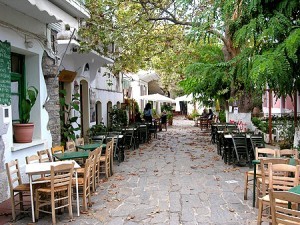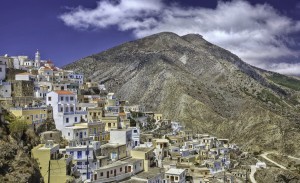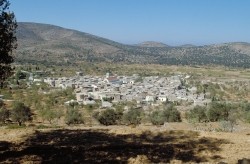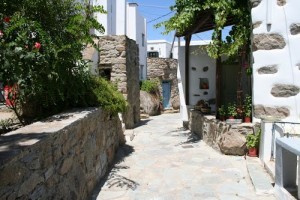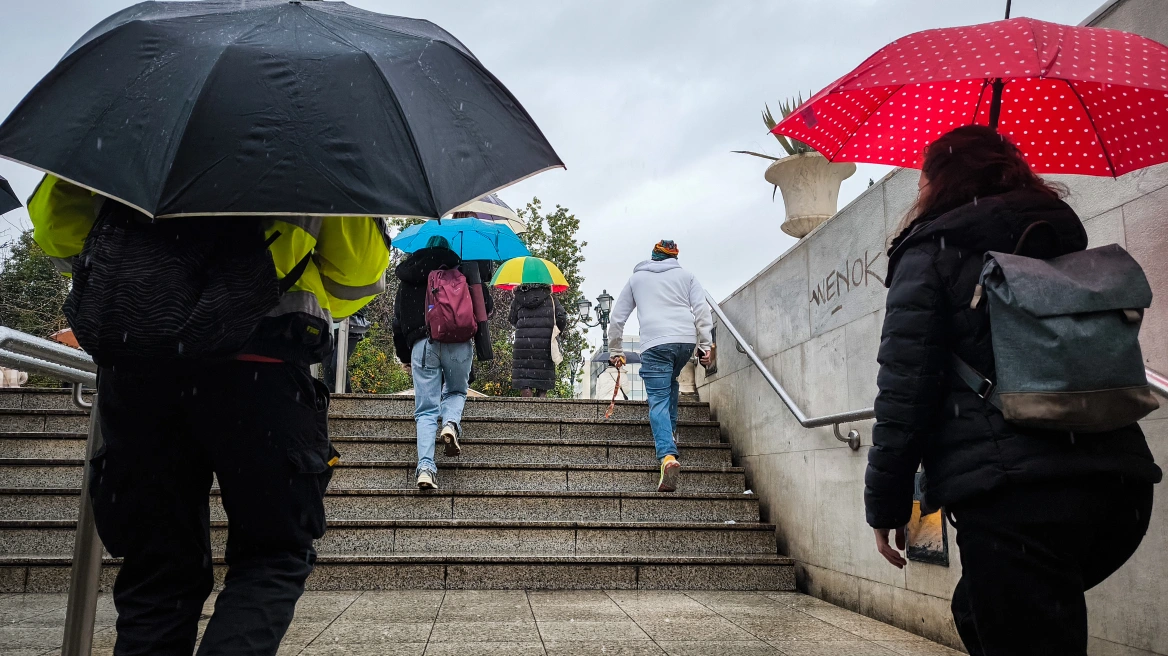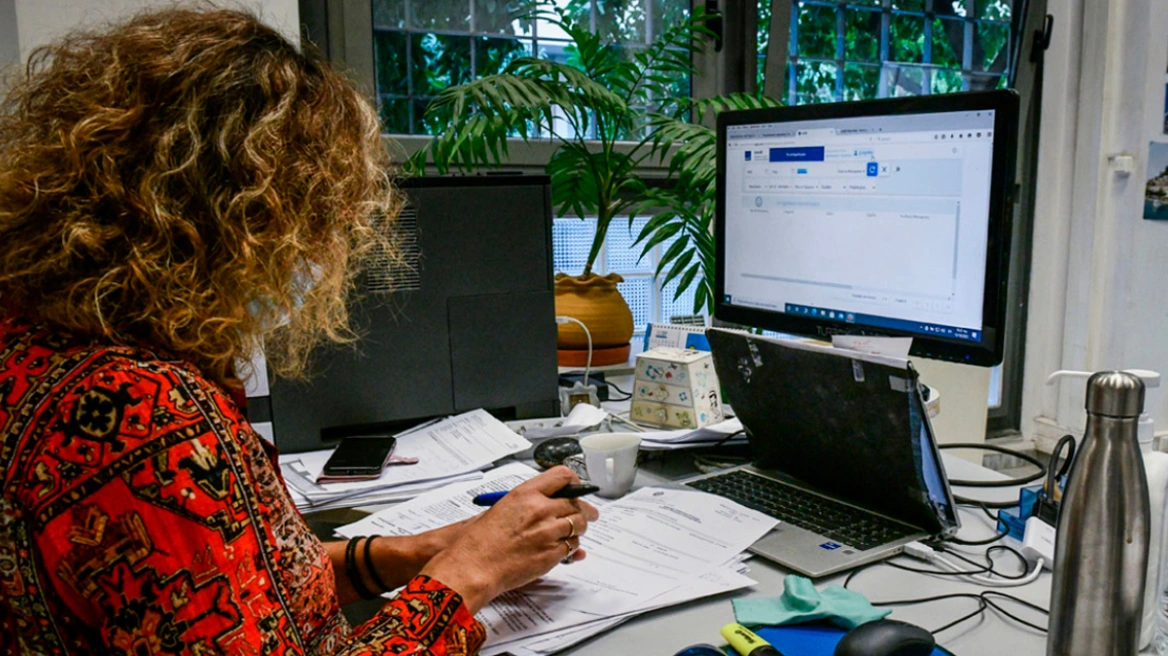Each year millions of visitors from all over the planet travel to Greece in order to enjoy the sun and the sea in the multitude of the Aegean Sea islands. In the mountainous areas of those islands, lovely villages command the landscape and ooze culture and tradition not to mention the lovely natural surroundings. Here are the five most typical villages, although making a selection has been quite a tough job…
Ikaria Island
Christos Rachon – the village that stays up!
Ikaria has been called the island that turns the tide and rightly so! Not obeying to norms and conventions, living a stress & haste-free life, the islanders have a laid-back attitude on life, which is evident in their daily activities and in their famed festivals. Against this backdrop, there is a village with an added feature: it has literally turned night into day!
Christos Rachon is a mountainous small town, among the most beautiful on the island and built amphitheatrically in a green area which has been holding for the past thirty years a world record: the shops are open at night-time (from sunset until next sunrise). Everyday life begins at about 7 pm and around midnight all stores are open and the villagers are free to shop until the early morning hours; it’s as if time has stopped.
This is where you will find probably the only self service bakery; the owner makes the bread, opens his shop and then goes away! Whoever wishes to buy bread can come in and … leave the money on the counter on his/her way out! Naturally, the village attracts all nightbirds on the island, who have a great time at the local festivals until dawn, the best known one being the festival held on August 6: it begins at 1 a.m. and the revelling goes on until next noon.
Karpathos Island
Olympos – the ark of tradition
Located on the northernmost tip of Karpathos Island, at the neck of Mt. Profitis Ilias, lies Olympos, a living folk culture museum which exists by the same name since antiquity. The geographical isolation from the rest of the villages on the island has contributed greatly to maintaining – to this day – its singular cultural identity intact.
The archaic dialect, the music, customs and architecture showcase the singularity of the community. Women wear traditionally woven costumes in their everyday life. Wedding traditions, Easter customs and the ceremony of “the name-giving of the seven” which takes place on each of the seven first days of life of a newborn are the most important among the array of customary practices.
The village’s main social centre is the church. Every religious and social event takes place in the church precincts. The biggest festival is Ai Giannis feast held on August 29; it takes place next to a country chapel far away from the village. A special ceremony is performed during the festival, which attracts ordinary visitors as well as anthropologists and ethnologists who are interested in a field study of local customs.
Naxos Island
Apeiranthos – the marble village
Apeiranthos or t’ Aperathou is considered the most traditional village on Naxos Island and is one of the most beautiful traditional communities of Greece; it has managed to keep its special character almost intact ever since the period of Venetian rule. It is a mountainous almost cut-off community located at the foot of Mt Fanari, and covers the area around the two circa 17th century towers.
Every part of it is a fine example of vernacular architecture where marble is the main building material! Stroll about the community, particularly on Apano Chorio quarter, and you will no doubt feel admiration for the marble-laid cobbled narrow streets below archways, the tree-shaded squares, the elaborate chimneys in a particular shape and colour and the well-preserved mansions.
Make sure you visit the village’s five (!) museums as well as Agia Kyriaki, a monument unique in the Balkans as there are nonfigural decorations of birds with ribbons around their necks. Apeiranthos dialect contains ancient Greek and Byzantine elements. Other noteworthy points to visitors are an ancient local custom called Koudounatoi practiced during the Carnival Period, the fine local weaving tradition and especially Aperathitiko singing which is about local men and women speaking in verse.
Chios Island
Mastichochoria – made of mastic tears
Mastichochoria is a group of villages on Chios Island, cloaked in legend and known the world over for their precious product, the mastic. Tour the medieval complex of houses which dates back to the mid-14th century, built by Genovese conquerors in order to provide housing for the families of mastic tree growers and the local rulers who managed the crop yields.
The exemplary architecture which provided protection from pirates plundering the Aegean Sea Islands is truly impressive. Today, out of the 24 Mastochochoria villages, the best preserved ones are those who did not suffer great damages during the 1881 disastrous earthquake. Mesta, Pyrgi, Olympoi, Kalamoti, Vessa, Patrika, Vouno, Elata and Koini are some of the most significant medieval communities in Greece. And don’t forget: visitors to Mastichochoria are welcome to witness the age-old process of mastic making which remains the same over 2,500 years.
Tinos Island
Volakas – the wonders of nature
On a small plateau in central Tinos lies a small village, unique in the whole world, on accounts of its terrain particularity. Round granite rocks of volcanic origin are scattered like thrown marbles on the arid land, covering an area of many kilometres and forming an impressive lunar type of landscape.
White-washed little houses with blooming flowerbeds nestle among the granite boulders creating an unusual architectural complex. Domestic and international Press have made extensive reportages on the village. National Geographic is one of them describing Volakas as one of the most impressive and quaint villages the world over.
Ask me anything
Explore related questions


